Roombas have dominated the market for so long and iRobots competitors have struggled to take over. There have been several companies to try and some even came close. None came as close as the Neato BotVac Connected series.
Now that Neato has made upgrades to the BotVac D7 Connected and released the D6, it may be time to think about a new champion. First, though, we need to decide which of these two powerhouse robots is the better option. That is what this article will do. Read on to get all of the details.
Of course, if you are in a hurry and just want my opinion: Choose the BotVac D6 Connected, it’s a better option for the money.
Contents
The Differences between these BotVacs
Being that the two vacuums are in fact, separate models, there are some differences. Not as many as you may think, though.
- The D6 comes in a Brushed Metal finish where the D7 has a Gun Metal Gray finish.
- The D7 comes with two rolls of boundary marker tape; the D6 only has a single roll.
- The Neato D6 Connected ships with an extra side brush the Neato D7 Connected doesn’t have.
- The D7 has a new feature on the mobile app called Zone Cleaning that the D6 does not utilize.
The Similarities between these Vacuums
At this point, it is easy to say everything else is identical. I won’t bore you with an exhaustive list, but here are the main points you should know:
- Both models use the Neato Ultra filter for allergen collection.
- Each of the vacuums has a 3600mAh lithium-ion battery for up to 2 hours of cleaning.
- The D7 Connected uses a mobile app or voice commands for control, just like the D6.
- The Neato D6 and the Neato D7 both use LIDAR navigation for precision movements and tracking.
- Each model has a large collection bin for less frequent emptying.
- Both vacuums have a turbo mode for a deeper cleaning on carpeted surfaces.
- Both robots will resume where they left off if the batteries need to be recharged before finishing.
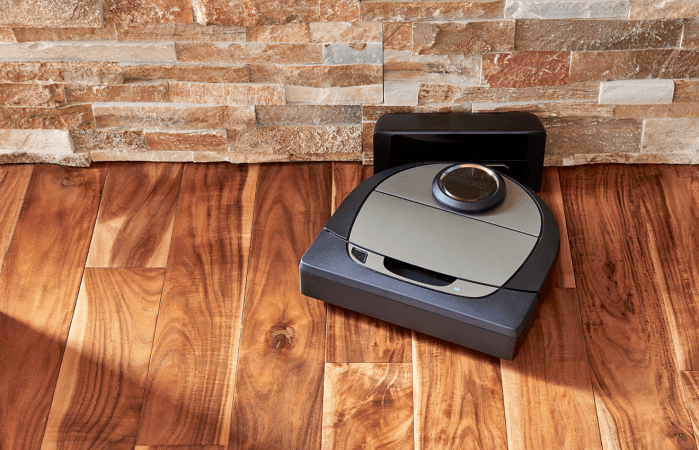
Specifications Chart
Now that you have the basics down let’s take a look at the two machines side by side.
| Neato Botvac D6 Connected | Neato Botvac D7 Connected | |
| Dimensions | 13.21×12.56×3.92 inches | 13.21×12.56×3.92 inches |
| Weight | 7.5 pounds | 7.5 pounds |
| Battery | 3600mAh lithium-ion | 3600mAh lithium-ion |
| Runtime | Up to 120 minutes | Up to 120 minutes |
| Charge Time | 4 hours | 4 hours |
| Automatic Recharge | Yes | Yes |
| Automatic Resume | Yes | Yes |
| Quick Boost | Yes | Yes |
| Filter | Neato Ultra | Neato Ultra |
| Navigation | LIDAR | LIDAR |
| Mapping | Laser guided with sensors | Laser guided with sensors |
| Wireless Communication | Yes | Yes |
| Mobile app | Yes | Yes |
| Voice Commands | Yes | Yes |
| Local Controls | Yes | Yes |
| Extraction Method | Spiral Combination Brush | Spiral Combination Brush |
| Floor Types | All | All |
| Collection Bin Capacity | 0.7L | 0.7L |
| Spot Cleaning | Yes | Yes |
| Zone Cleaning | No | Yes |
| Quick Boost | Yes | Yes |
| Turbo Mode | Yes | Yes |
| Eco Mode | Yes | Yes |
| Warranty | 1 year | 1 year |
| Price | Check on Amazon | Check on Amazon |
Dimensions, Features and Options
Let’s take a little time to compare the two models on a feature by feature basis. Comparing them in this manner, you’ll get a better idea of which model is best for you.
Zone Cleaning is New
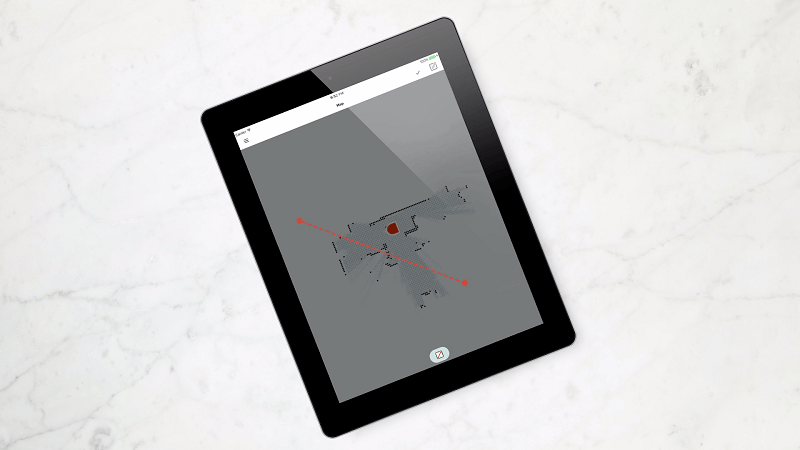
Neato is slowly rolling out a new feature through their mobile app for the Botvac D7 Connected. Neato calls this feature “zone cleaning.”
Zone cleaning is similar to spot cleaning, in that the robot will know that this area needs deeper cleaning. The difference is that with spot cleaning you find the spot, take the robot to the spot and press the spot clean button.
The robot will then start in this spot you have determined as needing extra cleaning, spiral outwards, and concentrate on that area before moving on.
Zone cleaning works the same way, in that you select the spot and the robot knows to concentrate extra cleaning to this area. The main difference though is that you select the area on the mobile app.
When you start a cleaning cycle, after a mapping run (which I will cover in a moment), you can use the app to select an area of the map for zone cleaning. How this works is you can choose high traffic areas, say your entry room, or around the dining room table. Once selected as a zone cleaning area, the robot will go clean it, it will then continue it’s cleaning cycle.
You will also be able to select a zone cleaning mode. Instead of doing a full clean, the robot will only go to the areas you have selected as a zone cleaning spot and clean just those areas.
As you can tell, this cleaning mode can help keep your home clean between major cleaning cycles or between the weekly cleanings with your upright.
Bottom Line: The D7 wins, obviously as the D6 doesn’t have this feature.
The Brush Rolls Have a New Look and Functionality
While the combination brush roll isn’t exactly new, the spiral combination brush roll is. The brush roll has been used for almost every Neato robot. The use of the rubber blades is great for hard flooring; bristle brushes are great for carpet agitation.
Combining these two brush roll types makes a single bar for both hard flooring and carpeting. The bristles will agitate carpet getting the dirt and debris loose from deep within to be collected by the suction of the motor.
The rubber blades work well on hard flooring to sweep and collect the debris into the collection bin without scratching the surfaces.
The new brush, though, called the spiral combination brush roll, is used only in the D6 and D7. The good thing about the spiral brush is that it works well to pick up, collect and capture pet hair.
If you have pets or suffer allergies from pet dander, the spiral brush roll will pick up and collect more pet hair than the combination brush will.
The good news, though, is that if you prefer the combination brush roll, you can purchase one and replace it. They are interchangeable, but unlike the Neato D80, the D6 and D7 do not come with both options.
Bottom Line: This round is a tie. Both models come with the spiral combination brush roll.
Laser guided navigation is the same for all D series robots. The robots use what is called LIDAR, which is similar to how RADAR works, but instead of radio waves, it uses lasers.
The laser scans the home, the ceiling, the furniture and all other obstacles to map your home and create a plan of attack for the cleaning path. The map it creates shows up in your mobile app and you can see where the robot has cleaned and where it has left to go.
You can also use the map to use a digital form of containment called no-go lines. When using this feature, you will draw lines on the map that the robot will have uploaded to its internal version of the map. It will then treat these lines like virtual walls and won’t attempt to cross them.
In the original version of the mobile app, when they first released the no-go lines, the feature was hit or miss. The robots would often ignore the lines and clean where the user didn’t want.
In recent updates, though, the feature is more reliable. However, before you can use them, you have to do what is called a mapping run. In this mode, the robot will not actually clean the carpet or flooring of your home. Instead, it will run through your home (and often into things) while it creates the initial map.
If you choose not to do a mapping cycle, the map will be created over the first few times the vacuum runs through your home. Once a map is created, you will be able to use the no-go feature.

If you find that you don’t want to use this feature, you can use the magnetic tape containment method. While the magnetic tape iscumbersome and intrusive, it does work. You will get one roll of magnetic tape with the D6 and two rolls with the D7.
Bottom Line: The Neato D7 Connected Wins. They both have the same navigation, mapping and containment, but you get more magnetic tape with the D7.
Quick Boost Makes the Battery Even Better
In most residential situations the large battery of the D6 and D7 is enough to clean the entire floor on a single charge. In general, with a mixture of hard flooring and carpet, this equates to about 1600 to 1800 square feet.
Of course, depending on the layout, the number of obstacles, objects and walls this can change greatly. The good news is that if the battery does run low the robot will return to the charging station and recharge the battery.
With Quick Boost, the robots will scan their maps and calculate how much floor space remains to be cleaned and charge the battery with enough power to finish the job.
Instead of waiting for the battery to charge completely, the quick boost feature can have the robot back to work in less than an hour. Once the job is complete, the robots will return to the stations to fully recharge.
The quick boost feature and the automatic recharge and resume features will work up to two times each per cycle. So for those homes with a large floor plan, this means the Neato robots can clean for a total of up to six hours.
Bottom Line: This round is a tie. Both machines have quick boost technology as well as automatic recharge and resume.
The Controls Have Been Upgraded Slightly
As I have mentioned, the mobile app is going to be your most often used method of control. You can start, stop, pause or resume a cleaning cycle. With the app, you can also view the map it creates, use the no-go lines and view the status of the robot.
There other smaller features you can utilize as well, such as see how much battery life remains, and when to clean the filter.
Because there is wireless communication, you will be able to link your robot to the voice-activated controls such as Amazon Alexa and Google Home enabled devices. You can also use some Apple devices, primarily the Apple Watch.
Of course, there are local controls as well, but they are limited. You will be able to start an automatic cleaning cycle as well sending the robot back to the charging station.
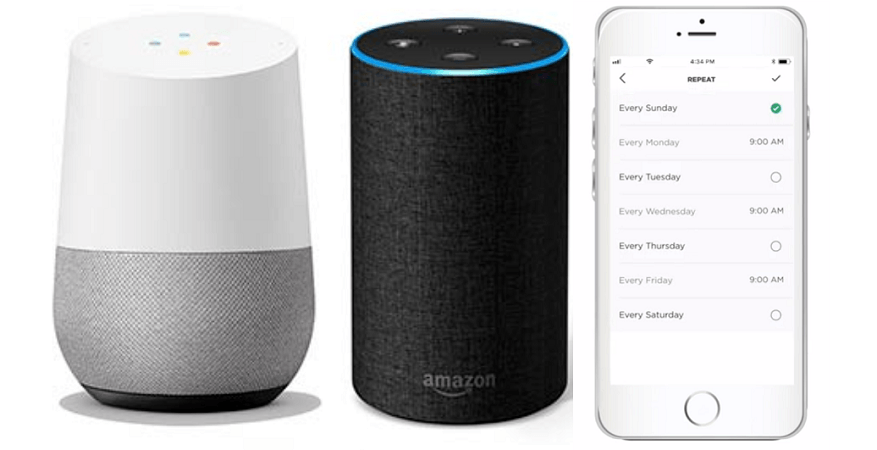
The app will allow you far more control. By being able to create schedules, you can let the robot clean when the time best suits you. A lot of users run the robots while they are at work, so they don’t disturb the robot and the robot doesn’t disturb them.
Of course, this is a personal choice and you can create a schedule that will best suit your needs. With the cleaning modes through the app, you will have a lot of control over how you clean your floors.
With the D7, of course, you will have the zone cleaning option which will enable a new cleaning mode. I won’t cover it again as we already talked about it earlier. However, combined with the other cleaning modes you will have complete control over your cleaning methods.
Bottom Line: This round is a tie. While the D7 has zone cleaning mode, this isn’t a deterrent to the D6, which has all the same control methods.
Frequently Asked Questions
Here I will answer some of the most commonly asked questions about the robots. If you find that you still have questions feel free to use the comment section below.
Q. Are there any other cleaning modes on either model?
A. Both the D6 and D7 Connected use the automatic cleaning mode as the default and the D7 can use the zone cleaning mode. However, there are two other modes both vacuums can use.
The first is the turbo mode. This will increase the motor speed, the suction power and the wheel speed. The turbo mode will run a little faster through your home, and the cleaning cycle will be shortened. However, the clean will be slightly deeper on the carpet due to the increase in suction.
There is also what Neato calls the Eco mode. In this mode, the robot will run a little slower, but the motor and vacuum will be quieter. While the Eco doesn’t refer to saving the environment or energy costs, it does reduce in-home noise pollution.
The turbo mode is the default setting for the automatic mode, meaning when the robot is running when you start a cleaning cycle it is also in turbo mode. You can disable the mode through the app or with the local controls.
Q. How do I know the filter will reduce allergens?
A. You know because I told you and I am completely trustworthy. Also, because that is what the Ultra filter does. While the HEPA certification hasn’t been something most large brand robotic vacuums have sought, their filters still do the same thing.
To achieve HEPA certification, the filter must collect particles down to 3 microns in size. This will capture such allergy-causing agents like pet dander, pollen, and dust mites. While the certification isn’t sought after, the filters still qualify.
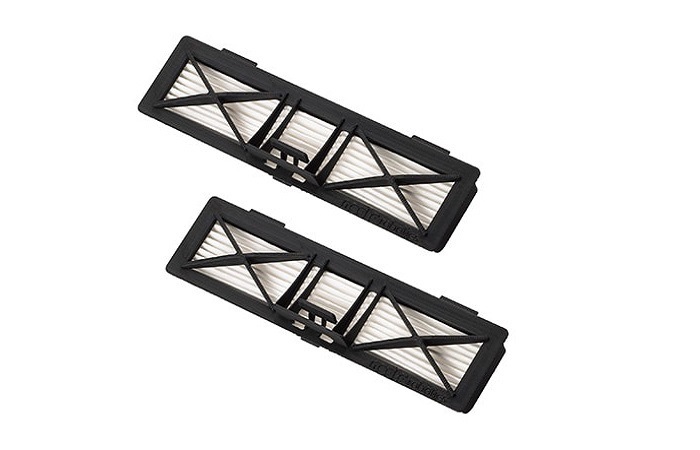
Any time a filter has a name such as high-efficiency, ultra or superior, it all means HEPA quality. While the certification isn’t on the box, the filters are still the same quality. So, if you don’t believe me, you can believe the results.
Q. What type of maintenance do these robots require?
A. They require just as much maintenance as all of the other robotic vacuums. The most frequent thing will be emptying the collection bin. The first few times you run the vacuum you will need to empty the bin after every cleaning cycle.
However, after the vacuum does it’s job it will take more and more cycles to fill it up. In most cases, you will only have to empty the collection bin after every second or third cleaning cycle.
When you do empty the bin, you should also flip the robot over and check for tangles and debris caught in the side brush and brush roll. Clean out the tangles as they occur.
From there you need to regularly wipe off the sensors and the laser housing to keep all dust and build up off of the lenses. You will need to check the filter weekly and replace it every 3 to 6 months depending on how dirty it becomes.
Other general maintenance things to note are keeping the wheels free of tangles from hair or strings. You also need to remove the brush roll regularly and check the air duct for dust and debris build up. This will also help from voiding your warranty.
What I Like About the Neato Botvac D6 Connected
- Extra long battery life and quick recharging.
- HEPA quality filtration for allergen reduction in the home.
- Intuitive mobile app with mapping features.
What I Like About the Neato Botvac D7 Connected
- Everything from the D6 Connected, plus:
- Zone cleaning mode in the mobile app.
- Spiral combination brush rolls for improved pet hair collection.
- Laser guided navigation.
In Conclusion
The D7 is the top of the Connected series line up and is rivaled only by the Roomba 980 and the Neato D6 Connected. While the debate on the Neato versus Roomba will continue, the debate between the D6 and D7 is a fairly easy call to make.
The Neato D6 is an all-inclusive robot with all the capabilities that are required of a modern-day robotic vacuum. You will have all of the control options that you can handle, local, voice and mobile app controls.
The D7 Connected has every feature that the D6 has with some added features. You will be able to use the zone cleaning mode and an extra roll of magnetic tape. The features are nice, especially the ability to control a spot where the robot should go by using the app.
For me, though, the added app functionality isn’t worth the higher price. You may find use in the app and want to spend more money if so, you should take it. If the cost of the D7 ever matches or is lower than that of the D6, then it would be the smarter choice. As it stands, though, the D6 is the same machine at a lower cost and a no-brainer.
Click here for all the robot vacuum deals on Amazon today.
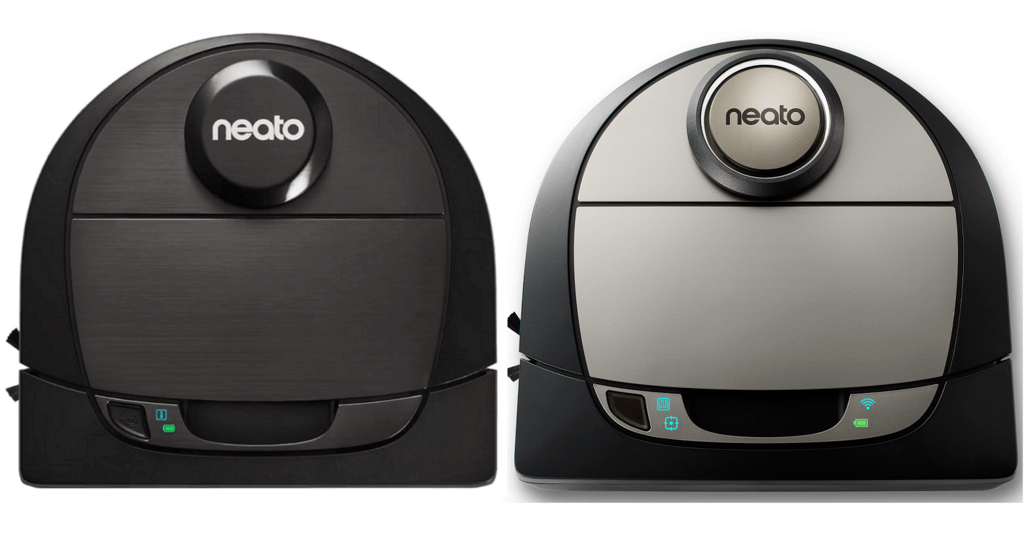
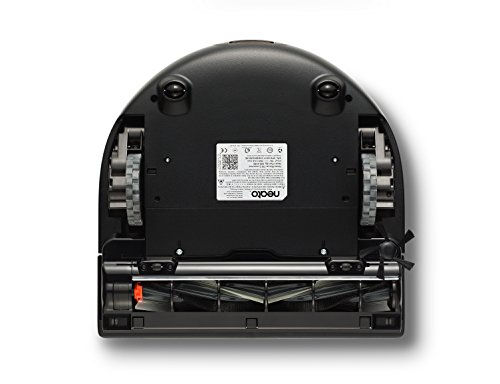
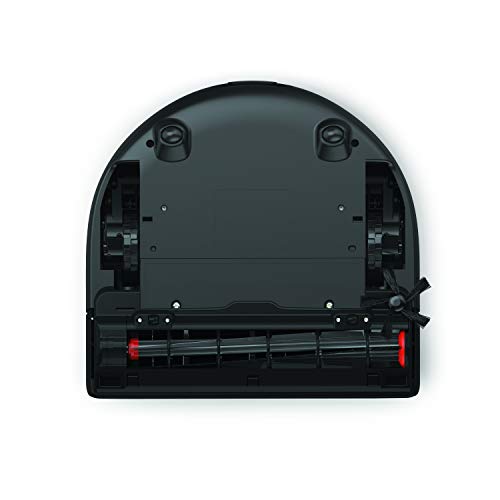
RADAR does not use sound waves. It utilizes radio (electromagnetic) waves. SONAR uses sound.
Thank you for the correction, Jeffrey. I have corrected the error in the article!
You’re a good man, Kevin!